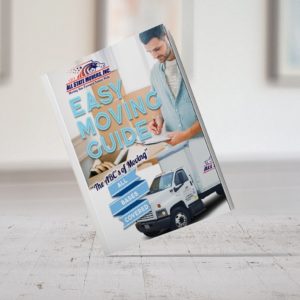Moving day is always a hectic affair! As you plan for your move, here are some tips on how to prepare your pets for the big day. Simple steps can help keep your pet’s safe and secure and also keep everybody’s stress levels down!
1. Collars and ID tags
On the day of the move, make sure that your pet is wearing a reliable collar and ID with CURRENT telephone and contact information. Moves can often be chaotic, with lots of people moving in and out of your house or apartment. Pets can easily become frightened, panic and run out of an open door. You may also want to consider having your pet microchipped. In the event that their collar is lost, they can be ID’d at a veterinarian or equipped animal shelter.
*Note: If your pet is not accustomed to wearing a collar, it is a good idea to introduce them to it well before your move and get them used to wearing one.

2. Let The Movers Know About Your Pets
Always inform members of your moving crew, what kind of animals and how many there are in the house so they can be aware and mindful during the moving process. Let them know ahead of time if there are any special instructions related to your pets.
3. Day Of The Move
It is best if you are able to secure your pets in their pet crate and/or ideally closed room of your house or apartment until you are ready to leave with them. There will be plenty of strange and loud noises, strange people and smells that can frighten your animals and cause them stress and risk their attempting to flee.

4. How To Transport
Small dogs, cats, rabbits and other small should be kept in a secure, well-ventilated pet carrier. Larger dogs should always be leashed to prevent the risk that they get spooked and try to run away. NEVER transport ANY PET in an open truck bed, storage area of a moving van, or car trunk.
5. Moving Long-Distance
Make sure you identify pet-friendly hotels along your trip route, and reserve rooms ahead of time. For a list of pet-friendly hotels, see www.petswelcome.com or www.pet-friendly-hotels.net. If your pet is prone to car sickness or has extreme anxiety being in a moving vehicle, talk to your veterinarian well before your moving date for recommendations and possible medication prescriptions.
6. Breaks and Pit Stops
Plan on allowing for adequate potty breaks, water and food for your pet along your journey. Keep dogs leashed at all times during your roadside rest stops.





